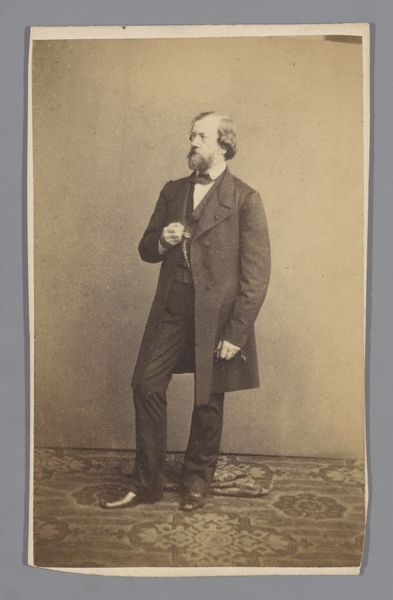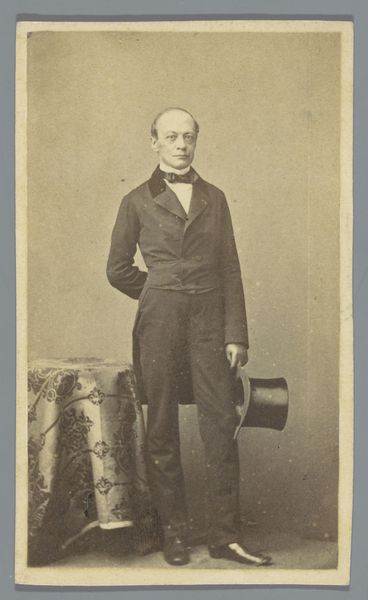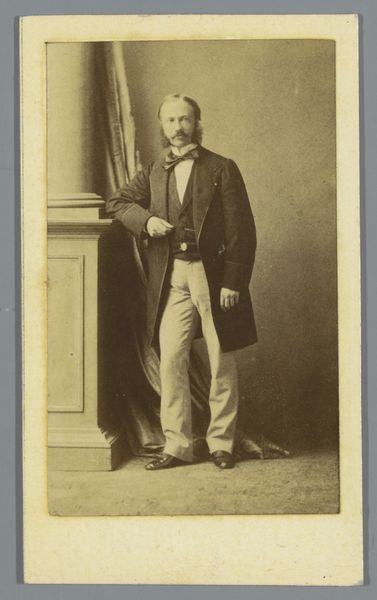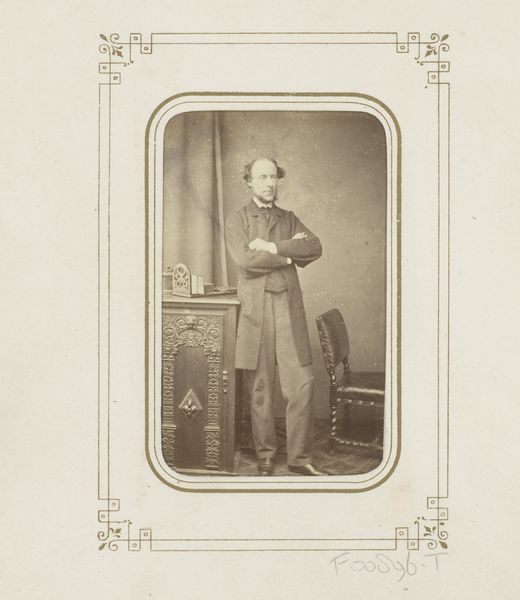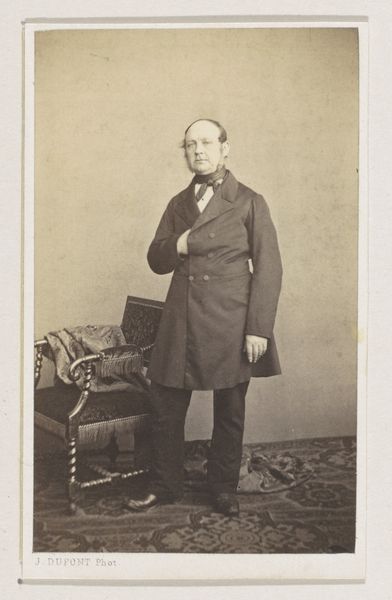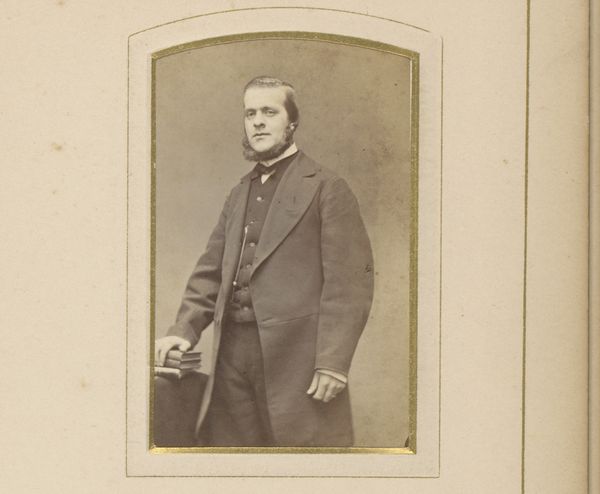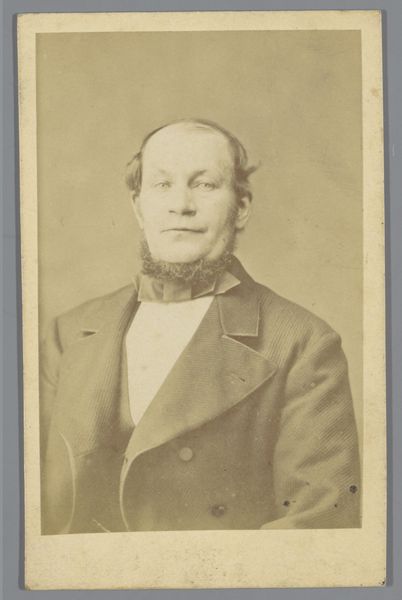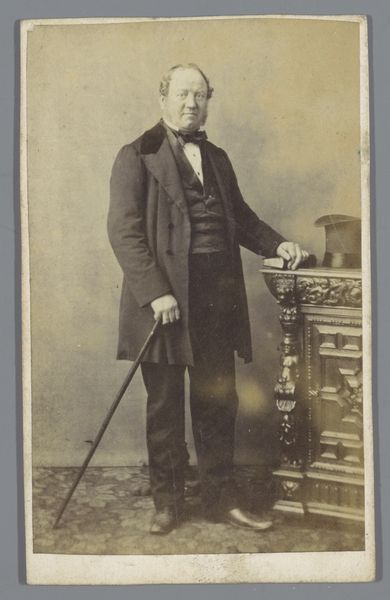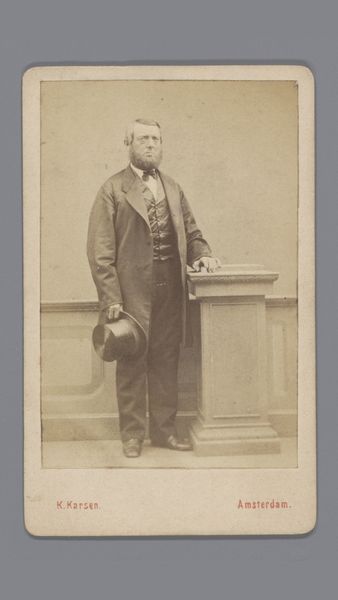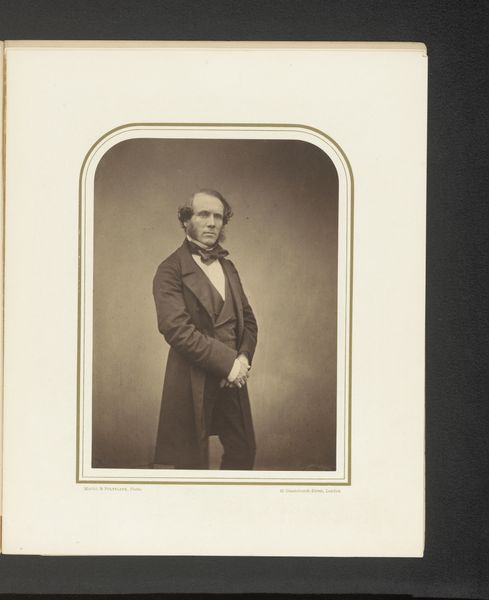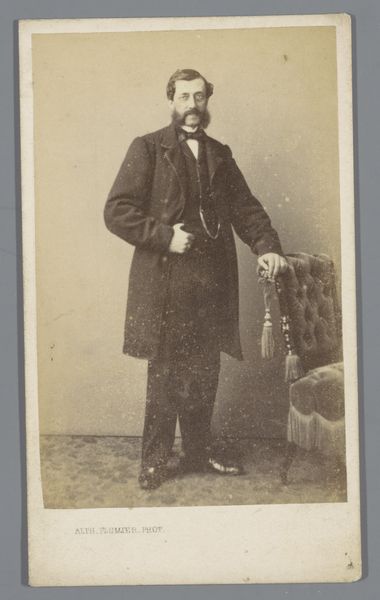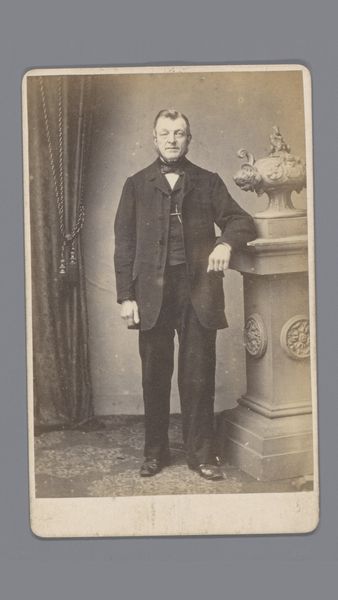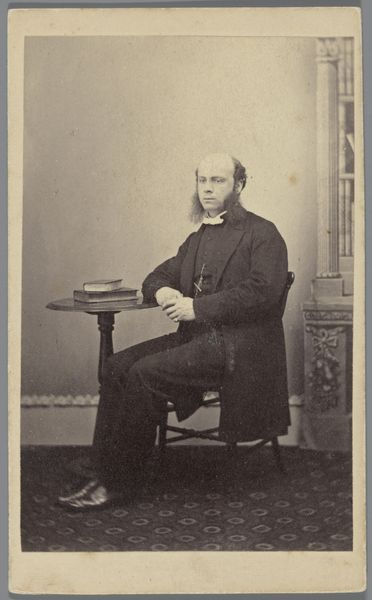
photography
#
portrait
#
photography
Dimensions: height 99 mm, width 59 mm
Copyright: Rijks Museum: Open Domain
Editor: This is an undated photograph, sometime between 1855 and 1885, taken by the studio Constantin & Cie, and simply titled "Portrait of an Unknown Man by Table and Chair." There's something very staged about the photograph, of course. The man is obviously posed with props that give a sense of…establishment, perhaps. What's your read on this piece? Curator: Well, early photography was heavily influenced by portrait painting conventions. Studios like Constantin & Cie provided a burgeoning middle class with access to image-making. What do you notice about the props in relation to the sitter? Editor: I see a table with books and a fancy-looking object on top. A very ornate chair is also in the image. So these must tell us about him? I feel like the books point to learning and the elaborate chair to status, right? Curator: Precisely. The choice and arrangement of objects—books, a decorative urn, that particular style of chair—weren't accidental. They are there to signal respectability, affluence, and even perhaps aspiration. Notice also his attire; what statement is it making? Editor: The man is wearing a very nice suit with a waistcoat. A signifier of the Bourgeois? He is almost hiding his hand near the books. I see how everything is staged to promote an image. So even a portrait of an "unknown" man can speak volumes. It seems as if even the symmetry in the positioning of objects could say a lot about his desire for societal admiration. Curator: Exactly! Early photographic portraiture aimed not merely to capture a likeness, but to construct a specific persona for public consumption, a curated image to be circulated and remembered. These studios democratized image-making to an extent, even as they reinforced certain class aspirations. What's something new you take away from looking at this portrait? Editor: I'd never really considered the conscious construction of identity within these early photos before. I’ve often just looked at them as relics. Curator: It reminds us that images always participate in shaping narratives, whether personal or societal. Thanks for that perspective.
Comments
No comments
Be the first to comment and join the conversation on the ultimate creative platform.
